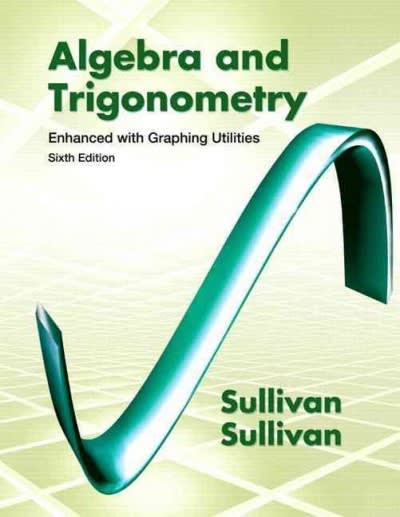Answered step by step
Verified Expert Solution
Question
1 Approved Answer
Scientists want to know if climbing is a key innovation, the evolution of which is associated with more species rich genera. A study counted the
Scientists want to know if climbing is a key innovation, the evolution of which is associated with more species rich genera. A study counted the number of species in 48 randomly selected genera that had all evolved climbing (Gianoli 2004). For each of those genera, the researchers also found the most closely related non-climbing genus and counted the number of species in each. The two genera belong to the same family taxonomically, and would not be considered independent. The number of species from each of the climbing or non-climbing genera are recorded in plant_evolvegenera.csv)The researchers would the probability of a type II error at more than than 0.1. Define the difference as Non.climbing minus Climbing. 1.2.1. Evaluate our current analysis to determine if the current sample size is sufficient to detect an effect size, d, of magnitude (which is approximately 300 species less in non-climbing genera) at significance level . Modify the code below as needed to evaluate your power . '''{r} pwr. t.test (n=48 , d = , sig.level= ,power= , type= , alternative= ) 1.2.2. Based on your analysis, do you think the current sample size is sufficient for our statistical analysis? Explain why or why not, without using the word power" ( Hint: what does power actually measure ?) 1.2.3. What if we were instead interested in detecting a difference of 200 species less, which gives us an effect size, d, of magnitude . Evaluate our current analysis to determine if the current sample size is sufficient to detect a true alternative with effect size, d, of magnitude . Modify the code below as needed. pwr. t.test (n=48 , d = , sig.level= ,power= , type= , alternative= ) 1.2.4. Based on your analysis, do you think the current sample size is sufficient for our statistical analysis to detect a true alternative at a difference of species? Explain why or why not. 1.2.5. Suppose when you tested your hypotheses you had found that there was no difference in species between the genus types (i.e., the null hypothesis is plausible). Do you trust your results if you are interested in detecting a difference of 200 species? Justify your answer with statistical reasoning. 1.2.6. What sample size would the researchers need to be able to detect an effect size, d, of magnitude theta.32 wit with a significance level of 0.05 to reach a desired power of 0.9? Justify your final answer '''{r} ''' Data: Climbing Non Climbing 14 3 20 23 13 3 49 42 300 9 358 26 302 197 43 1 19 62 3 1 75 60 2 3 22 11 157 39 115 7 35 12 130 5 15 1 650 25 845 34 6 1 30 7 307 427 2888 710 267 160 124 36 17 4 42 260 850 34 61 240 293 87 441 29 92 2 190 50 1041 262 13 8 1600 1 18 2 4 3 150 3228 350 318 142 9 525 2 24 54 180 702 320 635 625 31 306 6
Step by Step Solution
There are 3 Steps involved in it
Step: 1

Get Instant Access to Expert-Tailored Solutions
See step-by-step solutions with expert insights and AI powered tools for academic success
Step: 2

Step: 3

Ace Your Homework with AI
Get the answers you need in no time with our AI-driven, step-by-step assistance
Get Started


